Pothos varieties provide a plethora of gorgeous possibilities for growing at home. Although the word “pothos” is used imprecisely, it usually refers to plants of the genus Epipremnum, especially the aureum species.
We’ll look at 25 stunning types of Pothos in this guide, along with pictures and explanations that highlight their special qualities. Pothos may withstand lower light levels, but they need adequate care and light to flourish. Let’s explore the fascinating world of these plants.
Different Types of Pothos
Variegated Pothos
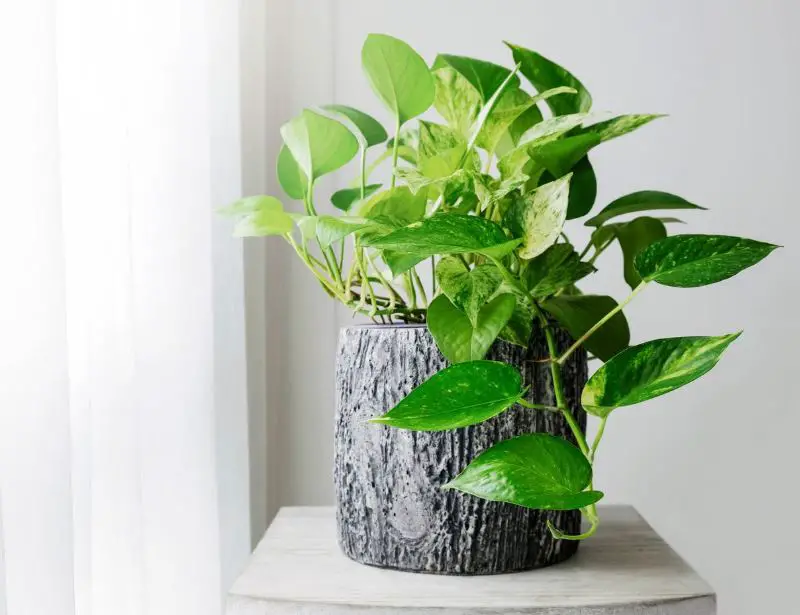
Variegated Pothos, also known as Devil’s Ivy, is more challenging to care for than Golden Pothos but can produce uniquely beautiful flowers. It prefers indirect light but thrives in well-drained potting mix with bright filtered sunlight. Ideal temperatures range between 50°F (11°C) and 65°F (18°C), and it tolerates cold down to 45°F (7°C). This variety needs consistently moist soil and ample space to grow.
Pearls and Jade Pothos
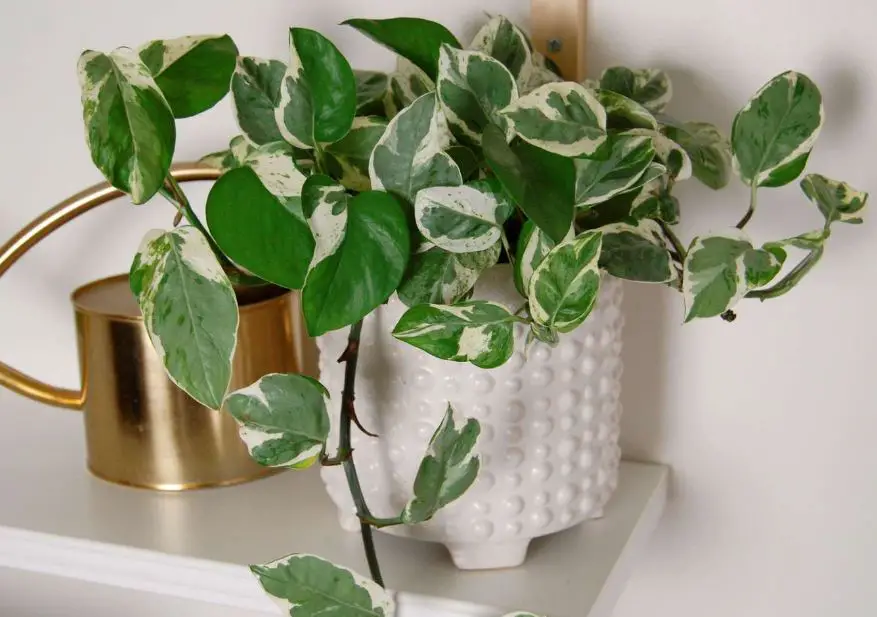
Pearls and Jade Pothos (Epipremnum aureum ‘Pearls and Jade’) are popular for brightening dark spaces. They can grow from the floor up or along a trellis and need lots of light to produce flowers. Their green leaves have cream speckles.
Pearl Pothos features thick, broad leaves with light to dark green and purple hints, and its flowers change from light green to pinkish purple.
Jade Pothos has thinner, velvety leaves, usually light green with purplish hints, and its flowers are dark purple but take longer to bloom.
Golden Pothos
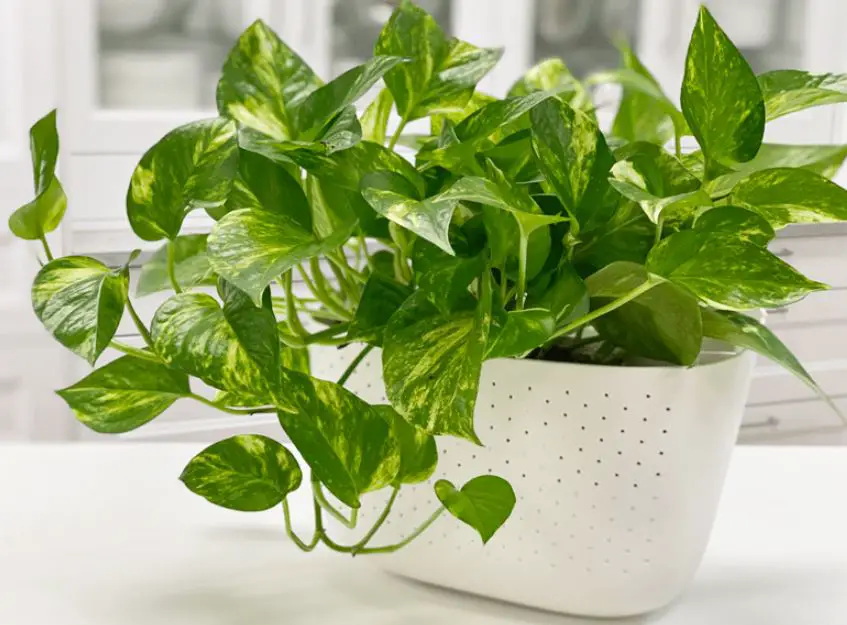
Epipremnum aureum, commonly referred to as “golden queen pothos” or “mother-in-law’s tongue,” is a well-liked houseplant that is frequently featured in the media. It grows well in a variety of settings, beautifying rooms and enhancing air quality. Water once a week and stay out of the sun. Golden Pothos, which is easily identified by its heart-shaped, green leaves with golden variegation, is not suited for cold areas and is sensitive to low temperatures.
Marble Queen Pothos
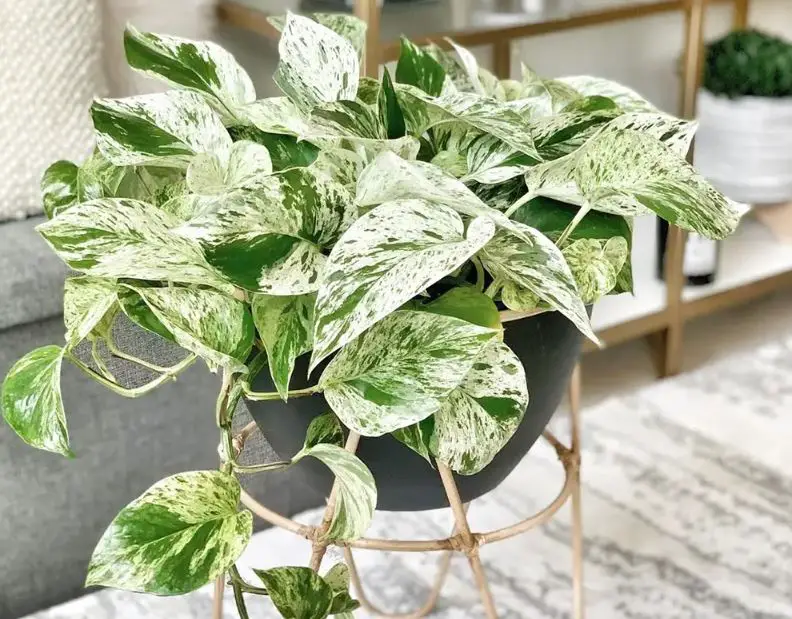
The leaves of Marble Queen Pothos (Epipremnum aureum ‘Marble Queen’) are characterized by a marbling pattern of green and white. It can be cultivated outdoors and is best suited for warmer areas; regular irrigation is necessary. Since this type prefers bright light, July is the ideal growing season. Easily identified by its variegated foliage, Marble Queen Pothos requires more water and enjoys a warmer climate than other pothos kinds.
Snow Queen Pothos
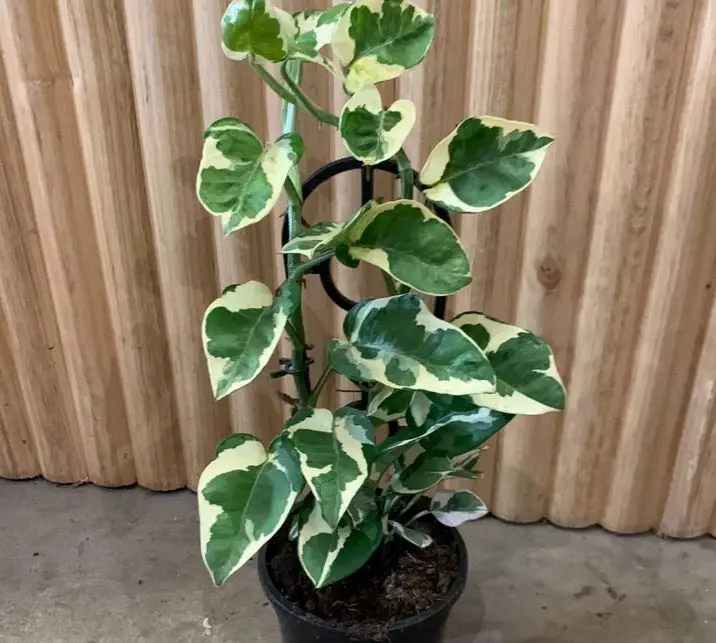
Epipremnum aureum ‘Snow Queen’, sometimes known as Snow Queen Pothos, is a hybrid variety with light green variegation on white leaves. It needs regular watering and does best in warmer climates. Because it prefers bright light, summer is the best time of year for this plant to grow. Also referred to as “The Queen,” Snow Queen Pothos requires more water than other pothos species. Easily identifiable by its vivid green and white leaf, it brings sophistication to any area.
Honey Pothos
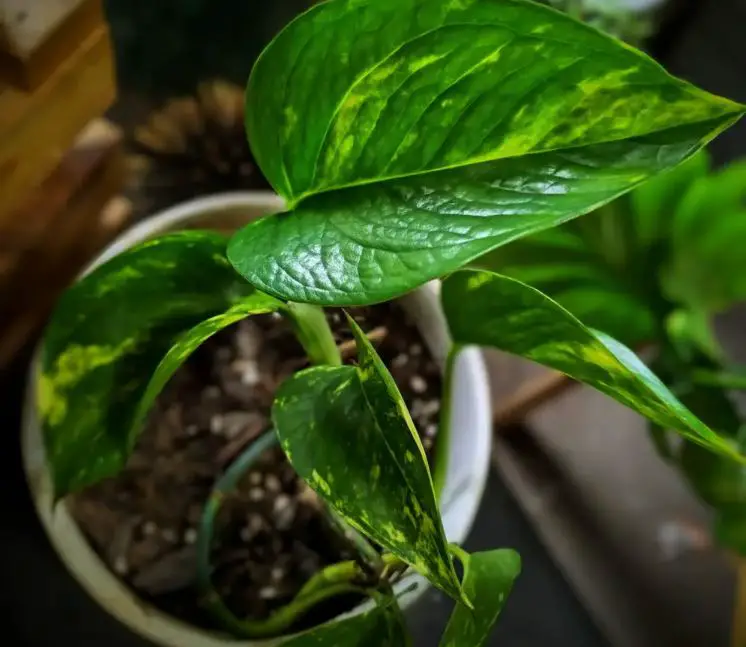
The leaves of the honey pothos plant are green with white and yellow streaks. It requires regular irrigation, lots of sunlight, and a warmer temperature to flourish. Because of its preference for warmth, this hybrid type is perfect for summertime outdoor growth. Easily identified by its variegated foliage, Honey Pothos makes a statement with its vivid, eye-catching leaves that liven up any area.
Manjula Pothos
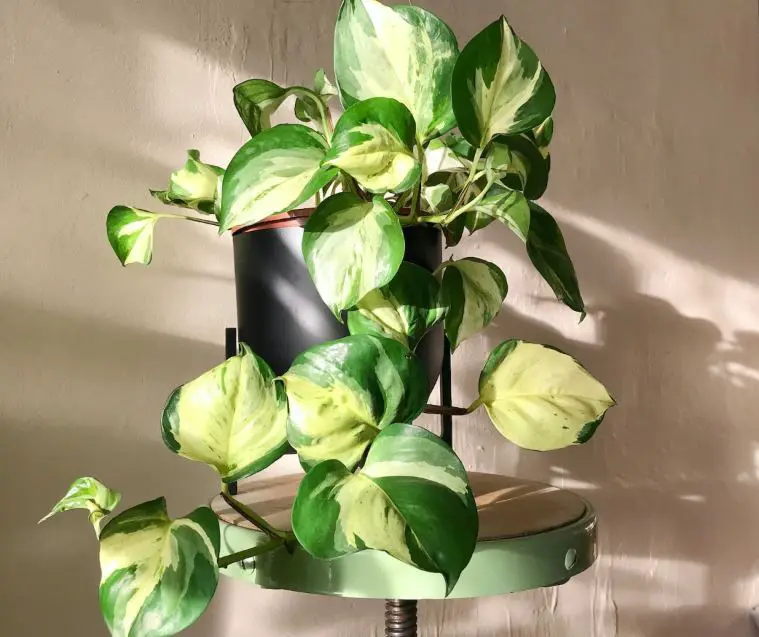
Manjula Pothos (Epipremnum aureum ‘Manjula’) is named for the founder of Pothos Jewelry and a pothos enthusiast. Its leaves are fern-shaped and silver green with dark green specks. This type grows slowly, reaching up to 12 inches in height and width, making it perfect for low-light conditions. Manjula Pothos grows well indoors and needs little water, making it ideal for tiny areas or pots. Between June and August, it produces tiny white blooms.
Cebu Blue Pothos
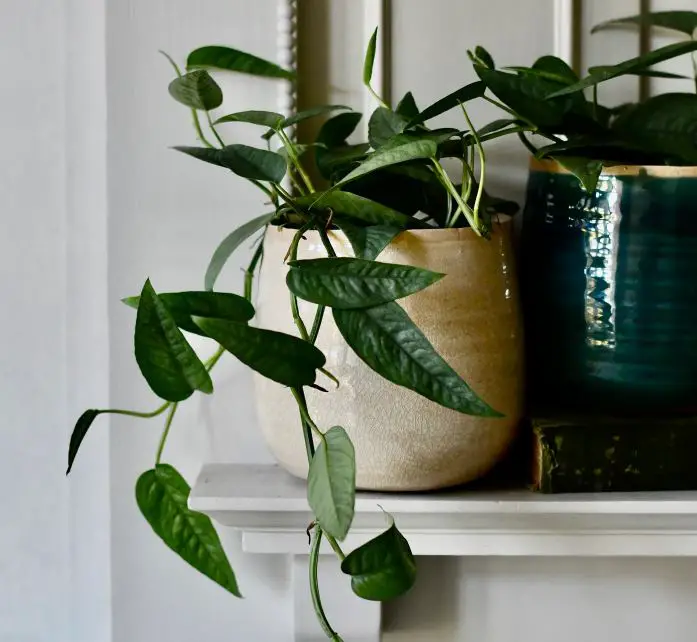
Epipremnum pinnatum “Cebu Blue,” often known as Cebu Blue pothos, is a well-liked indoor and outdoor cultivar that is ideal for beginners. It is ideal for beginners because of its easy-care guidance. It needs lots of room because it may grow up to six feet tall indoors or out and has eye-catching blue-green foliage. It can withstand low sunshine or shade, but it thrives in bright indirect light. To keep it healthy and in form, start fertilizing and pruning it when it reaches three feet in height.
Neon Pothos
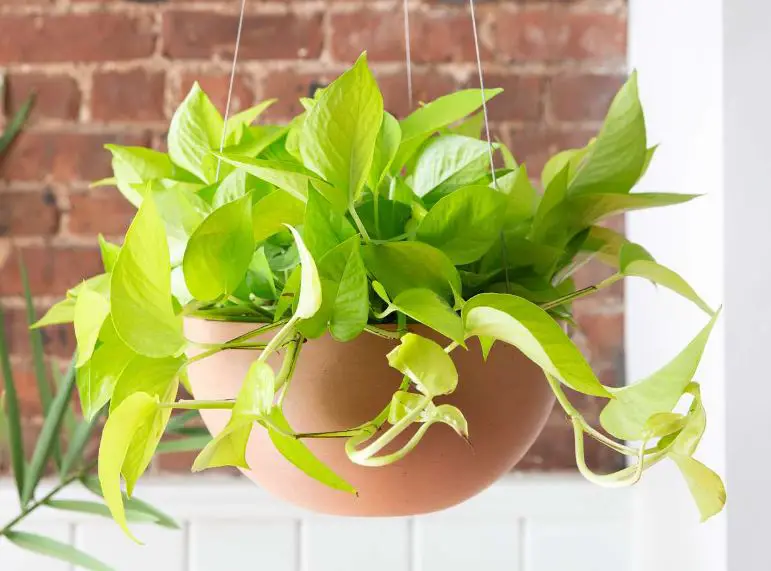
Neon Pothos (Epipremnum aureum ‘Neon Variegata’) features vibrant neon green leaves with darker streaks. As a hybrid, it thrives outdoors in warmer climates but requires frequent watering due to its preference for warmth. Avoid direct sunlight and excessive humidity, as this variety is sensitive. Recognizable by its intense coloration, Neon Pothos adds a lively touch to any space.
Splash Pothos
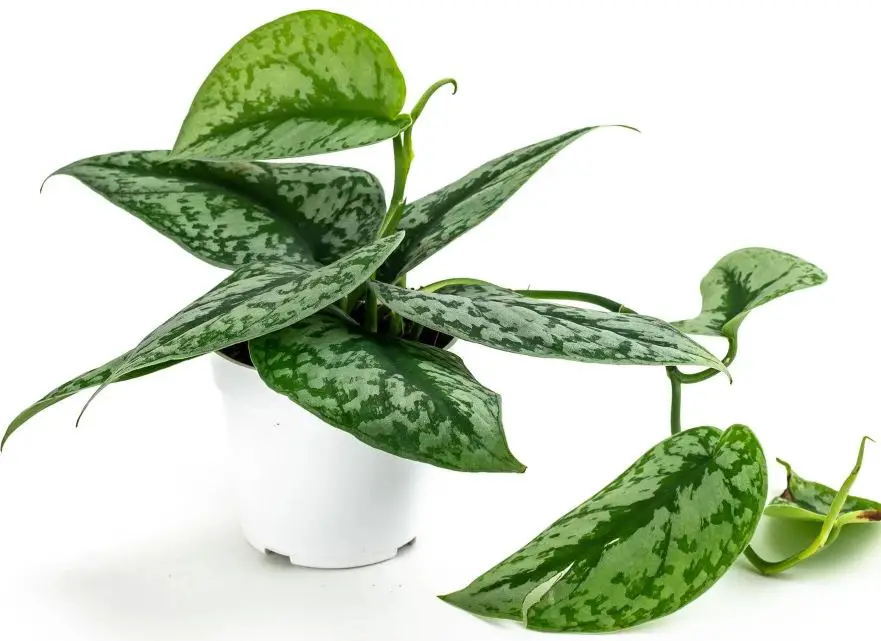
Splash Pothos is a versatile plant that can thrive in water without soil, making it ideal for indoor spaces. However, it is prone to mold, especially in high humidity environments. To prevent this, it’s best to keep Splash Pothos indoors in your home or office where humidity levels can be controlled. With its adaptability and attractive foliage, Splash Pothos is a popular choice for those looking to add greenery to their indoor spaces.
Jessenia Pothos
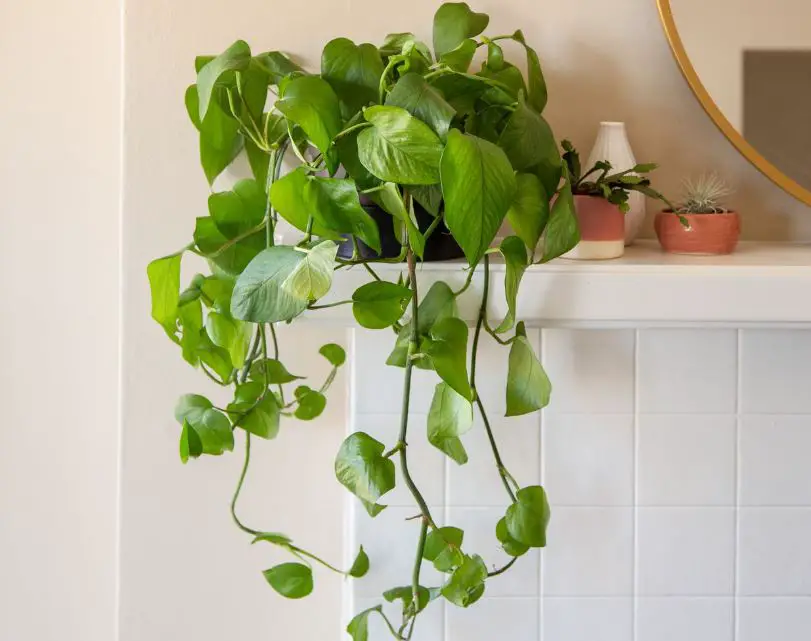
The Latin American cultivar Jessenia Pothos (Epipremnum aureum ‘Jessenia’) is renowned for its quick development and ease of growth. It can be pruned to preserve a small size, making it ideal for potted displays and suitable for both indoor and outdoor settings. Its lustrous, dark green foliage have cream stripes that accentuate their beauty. It grows well on top of buildings or in hanging baskets because of its trailing tendency. Although Jessenia Pothos enjoys strong indirect light, it can survive lower indoor light levels and needs little watering. It also exhibits resistance to typical pothos pests.
Trebi Pothos
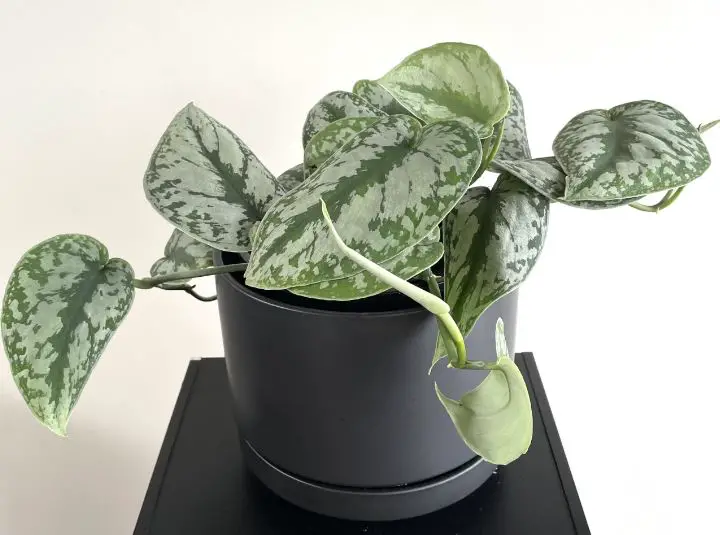
Trebi Pothos is characterized by its remarkable length, up to 20 feet, and small, dark green leaves. Its leaves become dark and green as it ages, giving it a resemblance to philodendron pothos or ivy. Trebi Pothos grows well in multi-level potted displays but is not suitable for hanging, making it the perfect choice for indoor settings that need height and depth. It gives a sophisticated touch to any area and is ideal for anyone looking for a vertical element for their collection of indoor plants.
N-Joy Pothos
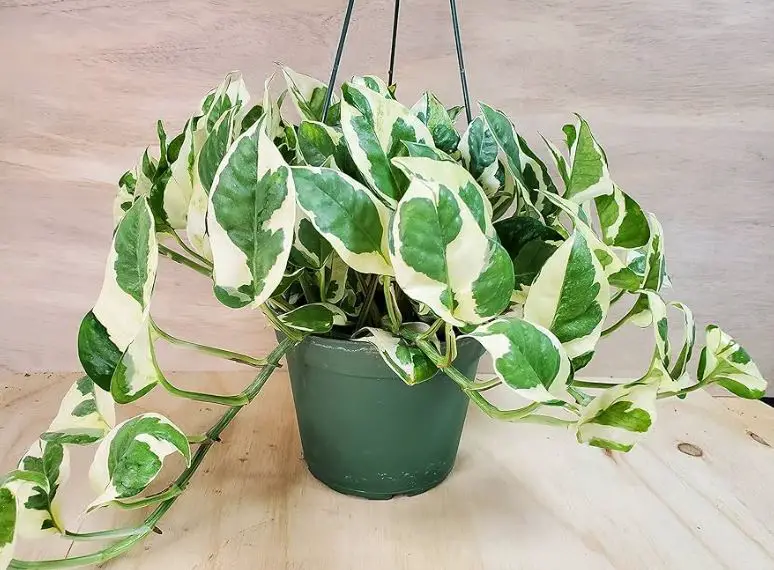
N-Joy Pothos has shiny leaves and rapid growth, which, in the right circumstances, turns into a lovely vine. It is best suited for indoor cultivation in cooler climates; it loves humidity and needs a lot of water to stay glossy. With its adaptable horticultural requirements, N-Joy Pothos grows well in a variety of environments, including patios, trellises, and interior potted plants. It can grow up to six feet tall and six feet wide with the right maintenance.
Pogo Pothos
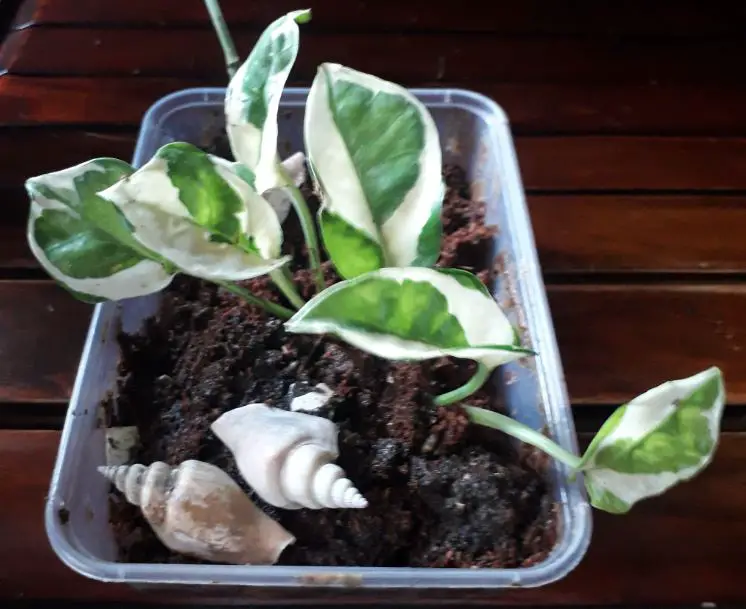
Pogo Pothos, also known as Dwarf Pothos, is perfect for smaller spaces where vertical room is limited. These potted plants reach a maximum height of 12 inches and maintain this compact size, making them ideal for apartments or homes with restricted space. Despite their small stature, they still offer the beauty and benefits of pothos, adding greenery to any environment without overwhelming it.
Siam Pothos

Siam Pothos is an excellent choice for those seeking lush greenery. These potted plants can reach impressive heights of up to 18 feet, making them perfect for creating a verdant atmosphere. With rapid growth, your Siam Pothos will quickly fill out, providing a lush and vibrant addition to your indoor space. Its vigorous growth habit ensures a stunning display of foliage that adds freshness and beauty to any room.
Curly Pothos

For those looking for a pothos variety with a spreading propensity, Curly Pothos is the best option. Any place is made feel lighter and cozier by the outward growth of these potted plants as opposed to their upward growth. They have a sprawling growth style, reaching a maximum height of 18 inches, but as they get older, they keep spreading out.
Mozart Pothos
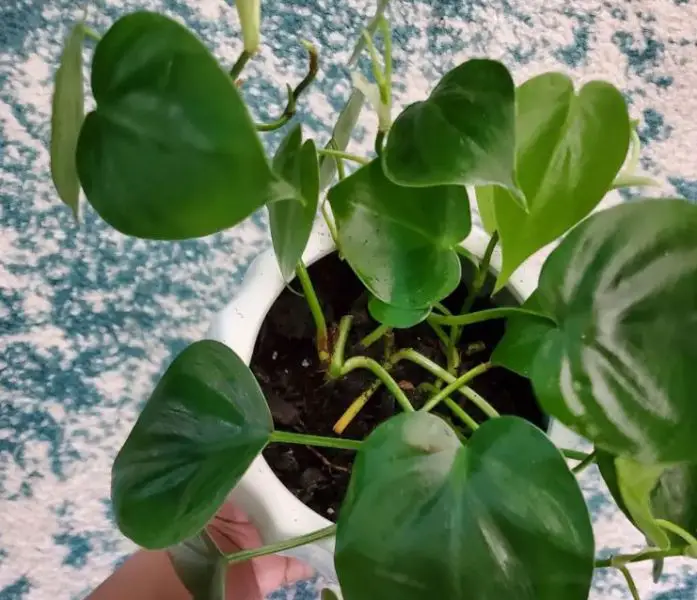
Aspiring gardeners will love Mozart Pothos since it grows easily and adapts to any type of setting. Novices will value its low upkeep characteristics. These 18-inch potted plants can occasionally produce purple, white, or pink blossoms that will give a pop of color to your interior decor. A charming addition to any plant collection, Mozart Pothos has a manageable size with occasional blooms.
Satin Pothos (aka silver pothos)
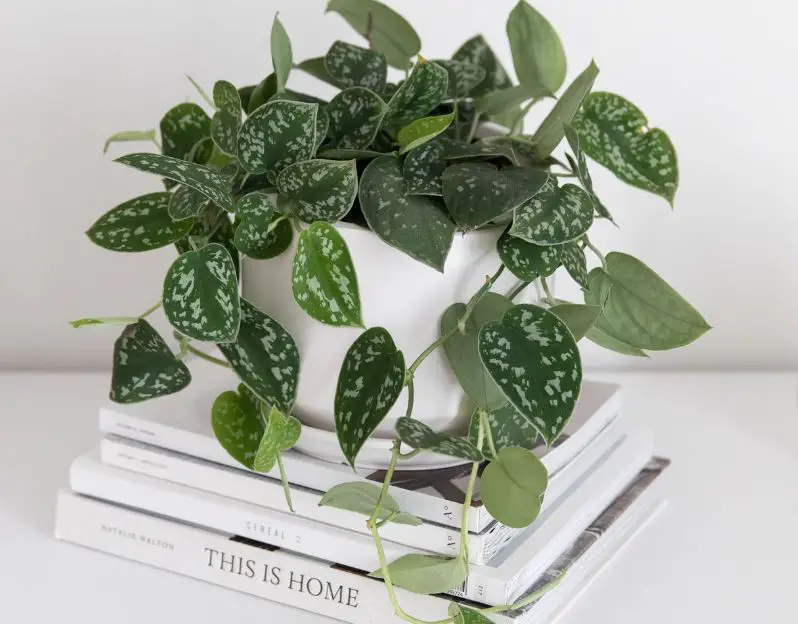
Satin Pothos, also known as Silver Pothos or Silver Queen Pothos, stands out for its smooth leaves. This variety can endure cooler temperatures, making it suitable for northern regions. With its preference for less frequent watering and higher humidity, Satin Pothos thrives in environments that are not overly warm. Recognizable by its distinctive foliage, it adds elegance to any space while requiring minimal maintenance.
Glacier Pothos
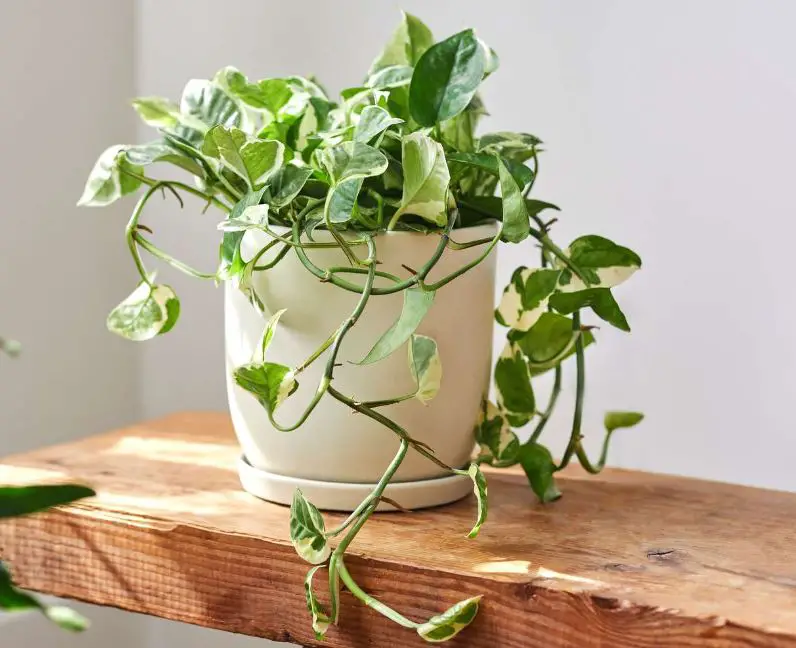
Glacier Pothos (Epipremnum aureum ‘Glacier’) is highly sought after for its striking foliage and ease of care. Its leaves can reach up to 20 inches in length and feature a mix of green, yellow, cream, and white colors, adding to its allure. This variety thrives in shaded outdoor areas or indoors, away from direct sunlight.
Propagation is typically done through division or cuttings, ensuring accurate reproduction. While resistant to many issues, overwatering can lead to brown, falling leaves. Proper care involves allowing the soil to dry between waterings to prevent this common problem.
Giant Pothos
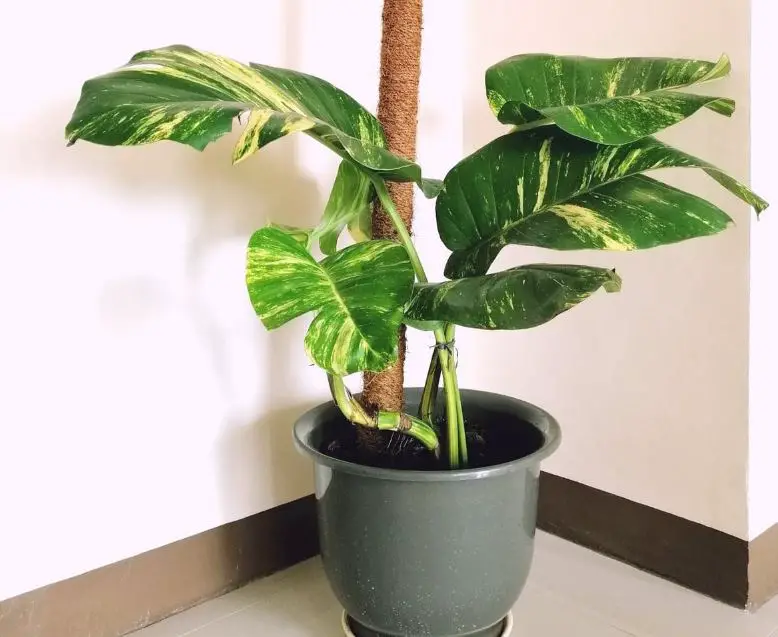
The huge, dark green leaves of the Giant Pothos have lighter streaks and borders that are tinted with yellow, white, or purple. Warmer climates are ideal for this hybrid cultivar, which requires regular irrigation. Although cold-tolerant, it needs extra water and should be cultivated indoors in the winter to keep its color and health. Large, variegated foliage makes Giant Pothos easily recognizable, and it makes a striking addition to any indoor or outdoor area.
Hawaiian Pothos
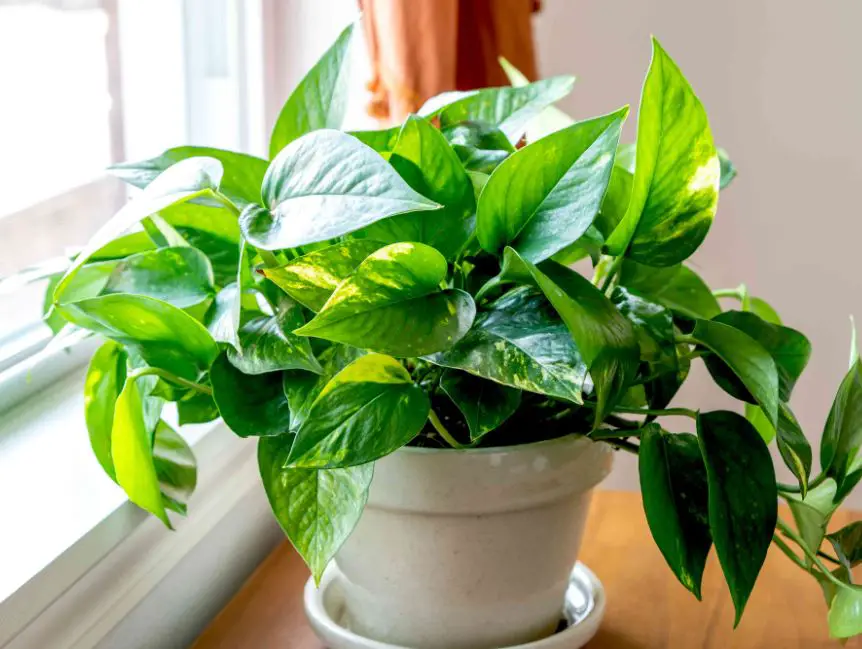
Hawaiian Pothos is known for its attractive leaves and vines, making it popular in nurseries and garden stores. It spreads quickly outdoors, often requiring plant supports or stakes. This plant thrives in high humidity, good air circulation, and indirect sunlight indoors. Outdoors, it can tolerate full sun but needs protection from hot afternoon rays. Avoid overwatering, as Hawaiian Pothos will wilt if left in standing water.
Harlequin Pothos
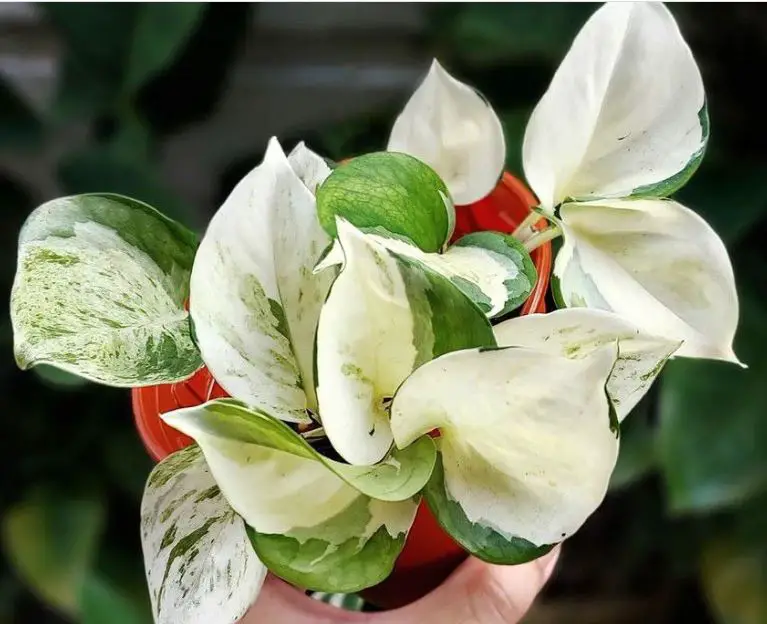
Harlequin Pothos (Epipremnum aureum ‘Harlequin’) is known for its dark green leaves edged with white and yellow stripes. Ideal for indoor or outdoor growth, it tolerates dry air and prefers bright indirect light or low, filtered sunlight. Typically reaching two feet but sometimes growing up to four feet, this variety thrives in well-drained potting mix. It withstands temperatures from 50°F (11°C) to 65°F (18°C) and is hardy down to 45°F with a consistently moist root zone.
Red Pothos
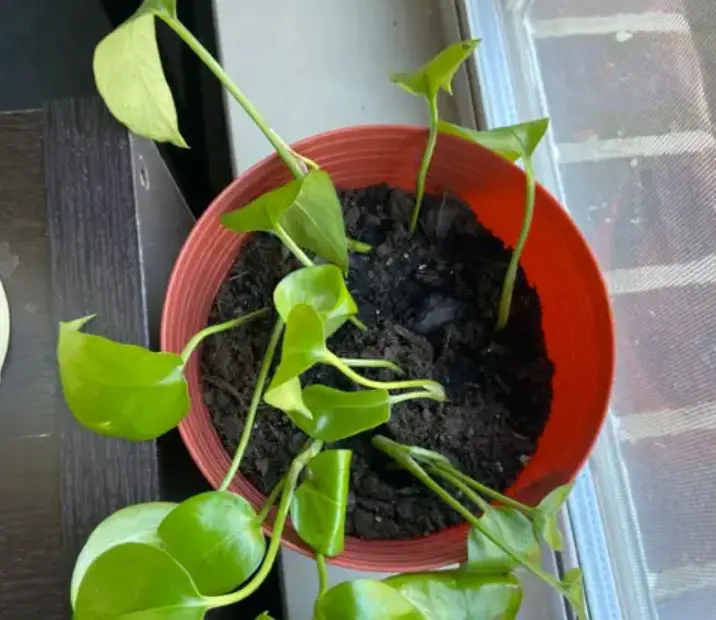
Red Pothos is a beloved variety known for its small, dark green leaves adorned with variegated stripes and white highlights, growing up to a foot in length. Low-maintenance, they thrive with minimal water and sunlight, best suited for indoor or shaded outdoor environments. Careful watering is essential to prevent pothos disease. Available at local nurseries, they are also easily propagated by dividing clumps, making them a popular choice for plant enthusiasts.






